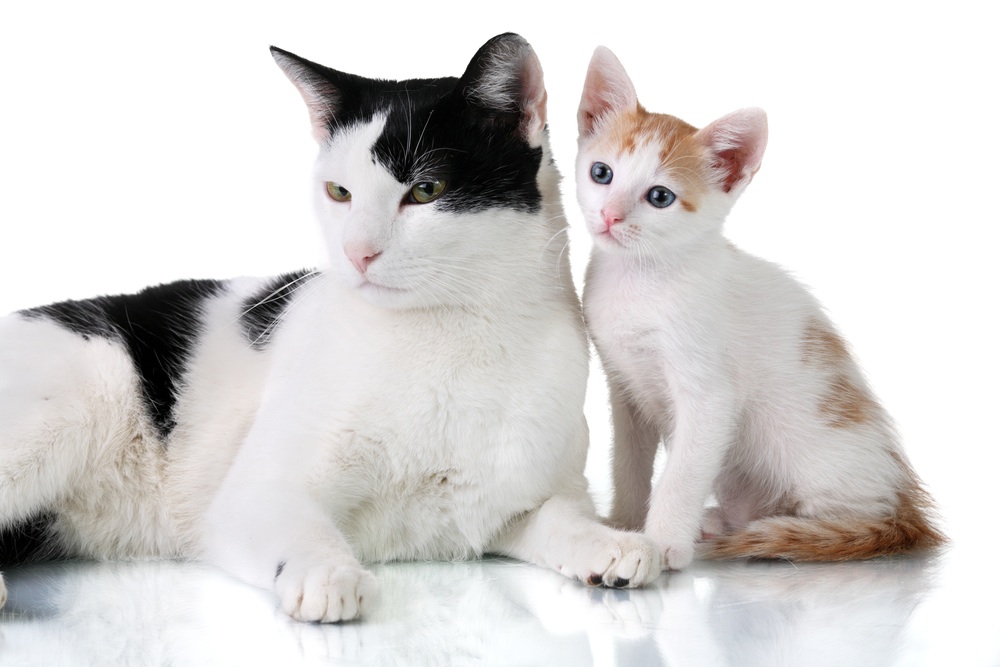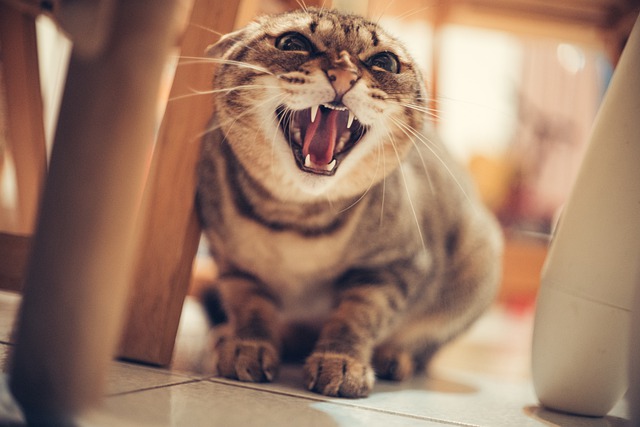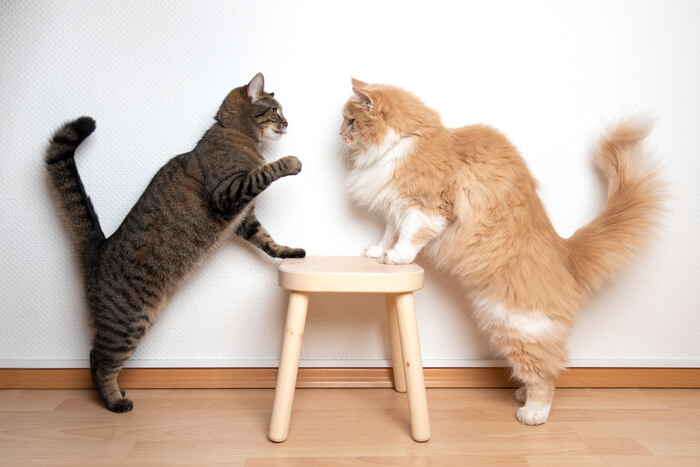The process of introducing a kitten to an older resident cat is unpredictable.
If you are lucky, your kitty will warmly welcome the younger member with open arms. He will not hiss, lash his tail, or display any aggression towards her.
Well, to be honest, this happens to only a handful of us. In most instances, the introduction is long, dramatic, risky, and stressful.
Dominance issues often arise on the part of the resident cat. He will feel like his cozy and love-filled life is about to be ruffled.
During what could be normal play, he may get too violent with the kitten for your liking.
You have probably seen it—the kitten pinned to the wall, thrown under the older cat, and being bitten repeatedly.
Too rough a play can be risky for the young cat. When should you be worried?
What Is A Normal Play Between A Cat And A Kitten?

Let’s kick things off by defining what normal play between a cat and kitten is really like.
Play comes naturally to cats of any size. For kittens, it allows them to develop their social, hunting, and stalking skills.
In the wild, these skills determine whether you make it or die. Older cats engage in play for social reasons.
It is not uncommon for cats and kittens to play rough with each other. This is mostly referred to as “mock aggression” and involves pouncing, swatting, stalking, chasing, kicking, biting, and swatting each other.
All these are directed at having fun and flexing muscles to help later in life.
Watching two adult cats play rough can make you go crazy. It is even worse if one is a kitten.
One minute the young cat will be nailed to the ground. The next one, the older cat will place him and put all his weight on her small and delicate frame.
From where you are sitting, the cries you hear from the young cat are distressful. When you’ve had enough and separated both, the kitten goes back and the cycle repeats itself.
Well, normal play is where despite being brutal with each other, both cats display no aggressive behavior towards each other.
Watch the kitten’s body. It should be relaxed and not tense. Her tail must equally sit at the back and her ears point forward.
Obviously, if the wrestling match is fun and fair, you will not hear crying noises from either party.
You may hear some squeals and weak cries occasionally but if it escalates to loud crying, intervention is necessary.
Else, if the kitten flattens her ears and holds them back or puffs her tail and fur, the play has gotten too aggressive for her.
By this time, the older cat is fighting the kitten and not merely playing with her.
A kitten that isn’t too happy about the play does not want to play anymore. Despite the efforts of the cat to encourage play, she will move away.
If she’s caught under the bigger kitty, she will make distressful cries in a bid to ask for help.
In case the weight of the cat is overwhelming, the kitten may deliver a sharp bite to send the cat away.
We don’t need to tell you that if you observe blood being drawn out, the match needs to stop.
Injuries are quite common during rough play. Claws come out. Canines are also put to work.
This can happen even if the cat and kitten have been playing with each other without a problem previously.
How to Stop Cats from Playing Rough With Each Other

When things are out of control, the first thing that comes to mind is to separate the cats and comfort the kitten while sending away or yelling at the older cat.
After all, she should know better than to hurt the baby.
Not so fast. Doing this can scare the older cat and cause her to loather spending time with the kitten in the future.
This is not what you are trying to achieve. So, what can you do?
1. Introduce a toy
Besides playing with each other, cats also flex their muscles by engaging toys.
When play becomes too violent, you can misdirect the attention of the cats by offering a variety of toys.
Felines love battling at things like artificial mice and balls. They also enjoy chasing and pouncing on dangling toys such as feathers hooked on flexible rods.
If you have a laser toy, now would be a good time to bring it out. The cats will follow after it and forget that they were fighting a few minutes ago.
Even if your kitten is not interested in playing with an interactive toy, let the older kitty have it. It will still break the fight apart.
2. Spray Water On The Cats
Cats loathe being wet. If you want to get your cat to stop doing something, spray some water on her.
As the play gets too rough for the kitten, grab a clean bottle, fill it with water and aim it at one or both cats.
The sight of the bottle is bound to get the older cat dashing off.
If he keeps playing, unleash fire and watch as he goes to groom himself.
Just make sure the bottle doesn’t have any harmful chemicals in it.
3. Make a loud sound
Secondly, a loud noise will also get the attention of the cats and cause them to stop playing.
You can yell loudly, clap your hands severally, band pans together, shake a penny can or use a portable vacuum cleaner.
The sounds will startle the cats and get them running in different directions.
If any of your babies get scared of loud noises, wave a handkerchief or small piece of cloth on them until you get their attention.
4. Offer Treats
Who can say no to a fresh plate of their favorite treat? Even your adorable cat cannot resist a plate of small lean beef cuts.
If you can get your hand on a treat or two for your cats, get it and use it to distract the felines.
In case the meat is nowhere in sight, grab a bowl of yogurt, a piece of salmon, ham, tuna, or ice cream.
Whatever you think can command the attention of the kitty goes. If the kitten is too young for the treat, be sure to give her what she can handle as well.
Parting Thoughts
Cats are gentle and sweet but when they play, things can get ugly.
Telling what is normal play and what has graduated to fighting can be pretty difficult.
However, the pointers mentioned here will help you make an informed decision.
Whatever you do, don’t scare off the big cat. She may never want to play with the kitten ever again. Approach slowly and break the fight properly.

Hi! I am Eleanor Price. I started this website after my cat, Louie, almost died from a case of botulism (a type of food poisoning often caused by bacteria that grow on food items). Turned out that my cat’s diet was the problem. I have made it my duty to provide the best information and recommendations about everything cat lovers need to know about their felines’ health and wellbeing. My goal is to find the most informative content on anything feline-related and share it with fellow hardworking kitty lovers.

